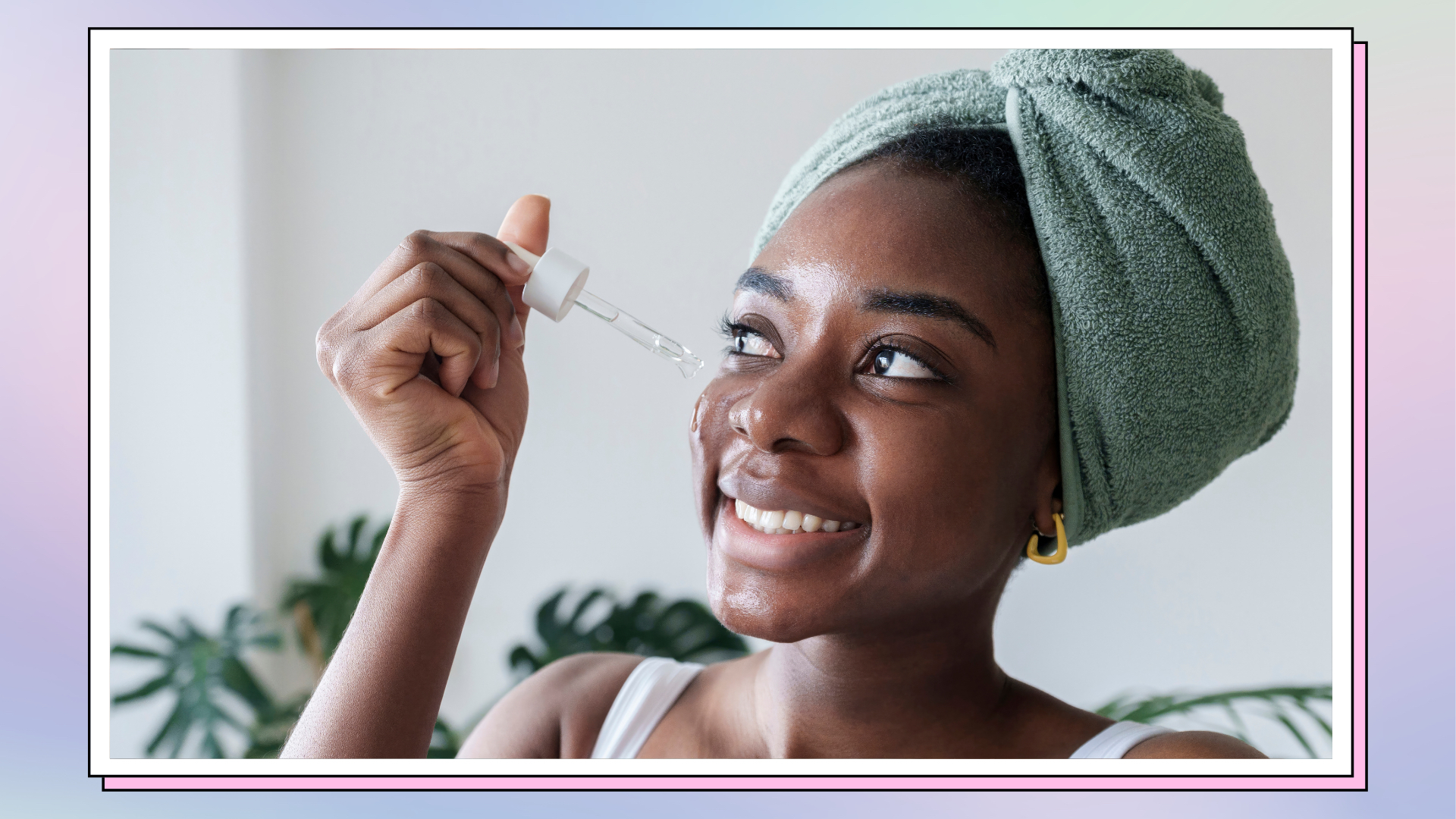How to treat retinol peeling and prevent it from reoccurring according to experts
Retinol peeling can actually be prevented with the right approach—here's what you need to know, according to experts


Retinol peeling—sometimes affectionately referred to as the retinol uglies—is just one of the things that may stand in the way of a flawless complexion when using this ingredient into your skincare routine.
Vitamin A (which retinol is a form of) is arguably one of the best beauty ingredients that you can include in your skincare routine—there's not much that it can't do. Using one of the best retinol serums is known to smooth lines and wrinkles, reduce pigmentation, tighten pores, and impart a covetable glow
But, with the use of this hero ingredient comes the potential retinol uglies, which is essentially a facial peeling that may take effect after you start using the serum for first time. There are some prevention strategies for this irritating side effect though—whether you're using a retinol oil or retinol serum—so one of our contributing beauty editors spoke to the experts about how to deal with retinol peeling if it does occur in the first few weeks of use.
Meet the experts on retinol peeling
Dr. Ifeoma Ejikeme is an aesthetic doctor and the founder of the Adonia Medical Clinic in London. She has explained how retinol works and why it causes peeling.
What causes retinol peeling?
If you experience retinol peeling, your first thought might be panic, closely followed by regret that you used the serum in the first place. But understanding why it happens and how to prevent and treat it is key to understanding how to use retinol with no qualms in the future.
This peeling occurs as the vitamin A derivative sets to work speeding up your cell turnover. “[This allows] for the faster progression of the cells through the skin, and the natural sloughing away of the dead top layer,” explains Dr. Ifeoma Ejikeme, medical director at Adonia Medical Clinic.
In short, retinol peeling is your dead skin cells peeling away from your face, leaving behind a fresh, flawless new layer of skin. Despite its look, it's actually a good thing!
How long does retinol peeling last?
Generally speaking, retinol is one of the more gentle varieties of retinoids (see the difference between retinol vs retinal here). However, "If you’re going to experience shedding, it will begin on day three to five of daily nighttime use, and this usually continues for about five to 10 days depending on your skin type and the percentage of retinol you’ve used,” Dr. Ejikeme explains.
Known as "retinization", this adjustment period may mean that your skin is prone to skin peeling, sensitivity, and redness too—kind of like when you introduce one of the best vitamin C serums into your routine. And while they should all subside by week four, you're probably hoping to bypass the awkward snake-like shedding phase as quickly as is humanly possible. Here's what our expert has to say.
How to treat retinol peeling, step by step
1. Start the retinol process gradually
Gradual introduction is vital to avoid this peeling effect; slow and steady is best. Rather than slathering on the highest concentration of retinol you can get your hands on, you need to work your way up. A word to the wise: you should always avoid delicate areas on the face like your eye contour area—trust us, peeling eyelids are NOT it, especially during those pesky Zoom calls.
So, therefore, it's important to start with the correct product strength. If you have dry, dehydrated, or sensitive skin, then it's advisable to start with a gentler 0.3% concentration, like the La Roche Posay Retinol B3 Serum. This can gradually be increased as tolerated—on average around every three months till you reach the optimum dose, which will likely be about 1%.
"Normal" skin types, on the other hand, can usually start at 0.5% and work up to around 1.5%. While those with an oilier, more resilient skin type can normally start with a 1% concentration and settle on 1.5% or 2%.
“Initially apply your chosen retinol twice a week for two weeks, then increase to three times a week for another two weeks, and follow with every night from week five. Done in this manner, you’ll find that you’ll experience very little shedding,” says Dr. Ejikeme. Though the benefits aren't exactly the same, if you have sensitive skin you could also try bakuchiol.
2. Add hydration and moisture into the equation
Retinol cleverly converts to retinoic acid and starts ramping up production in the lower layers of the skin, speeding up the shedding of the upper layer of your skin—AKA "dead" skin—as a result. Turbocharging the skin’s functions in this way has a temporary effect on the barrier function of the skin. “If the barrier function is impaired there will be more water loss leading to dryness, which can exacerbate the flakiness of shedding skin,” explains Dr. Ejikeme.
The solution? Hydration, hydration, hydration—one of our biggest retinol tips. Drip feed your face with your best hyaluronic acid serum 20 minutes post-retinol application, and then in the morning slather on a ceramide-packed moisturizer. "The ceramides help maintain the structural integrity of your skin barrier and the moisturizer will act as a barrier in and of itself, locking moisture in and alleviating dryness,” Dr. Ejikeme adds.
3. Avoid exfoliation
However unsightly you deem the dead and peeling skin, you must avoid the urge to reach for an exfoliant to buff it away. “Your skin will become sensitive when you first start using retinol, and while my patients often complain about flaking and the urge to scrub it away, I advise them to use a gentle moisturizing cleanser that won’t strip the skin and that doesn’t contain any exfoliating acids or beads,” says Dr. Ejikeme.
However, if you’re desperate, “you can gently swipe a muslin cloth over your face while rinsing off your cleanser once a week, as this will gently slough off peeling skin,” she adds.
So there you have it—consider yourself armed with the knowledge and know-how to add it to your skincare routine get into using retinol effectively, and without too much shedding.
Amerley is an award-winning beauty & lifestyle journalist who has been writing for the UK’s most well-known glossies, websites and newspapers for over a decade. Known for her ability to predict the next big trend, there is really very little she won’t try for a story. From microblading and injectables, to10 step skincare plans and breathing her way to better skin, Amerley loves to share her experiences and write relatable, informative and trend-led copy for beauty novices and junkies alike.